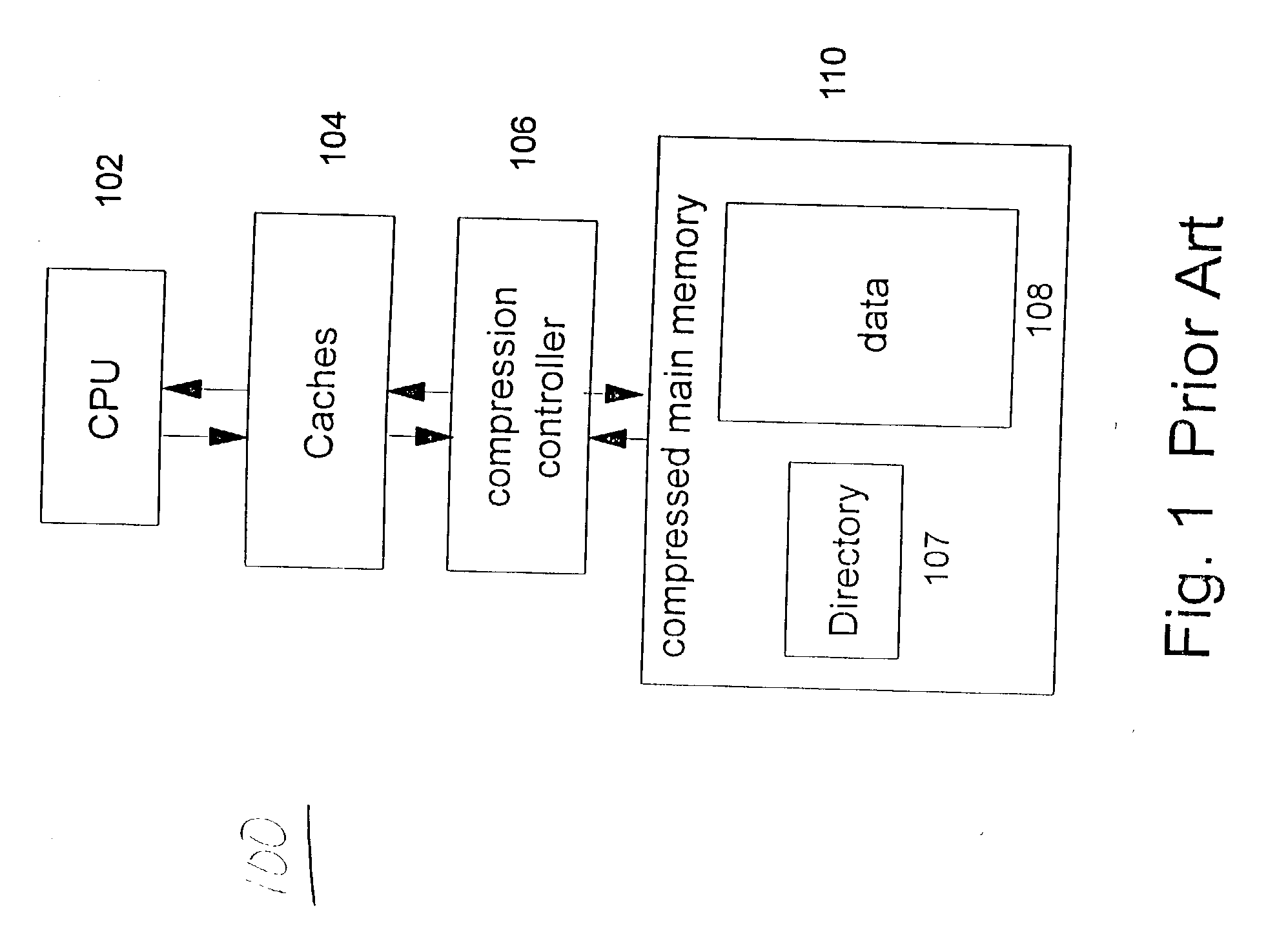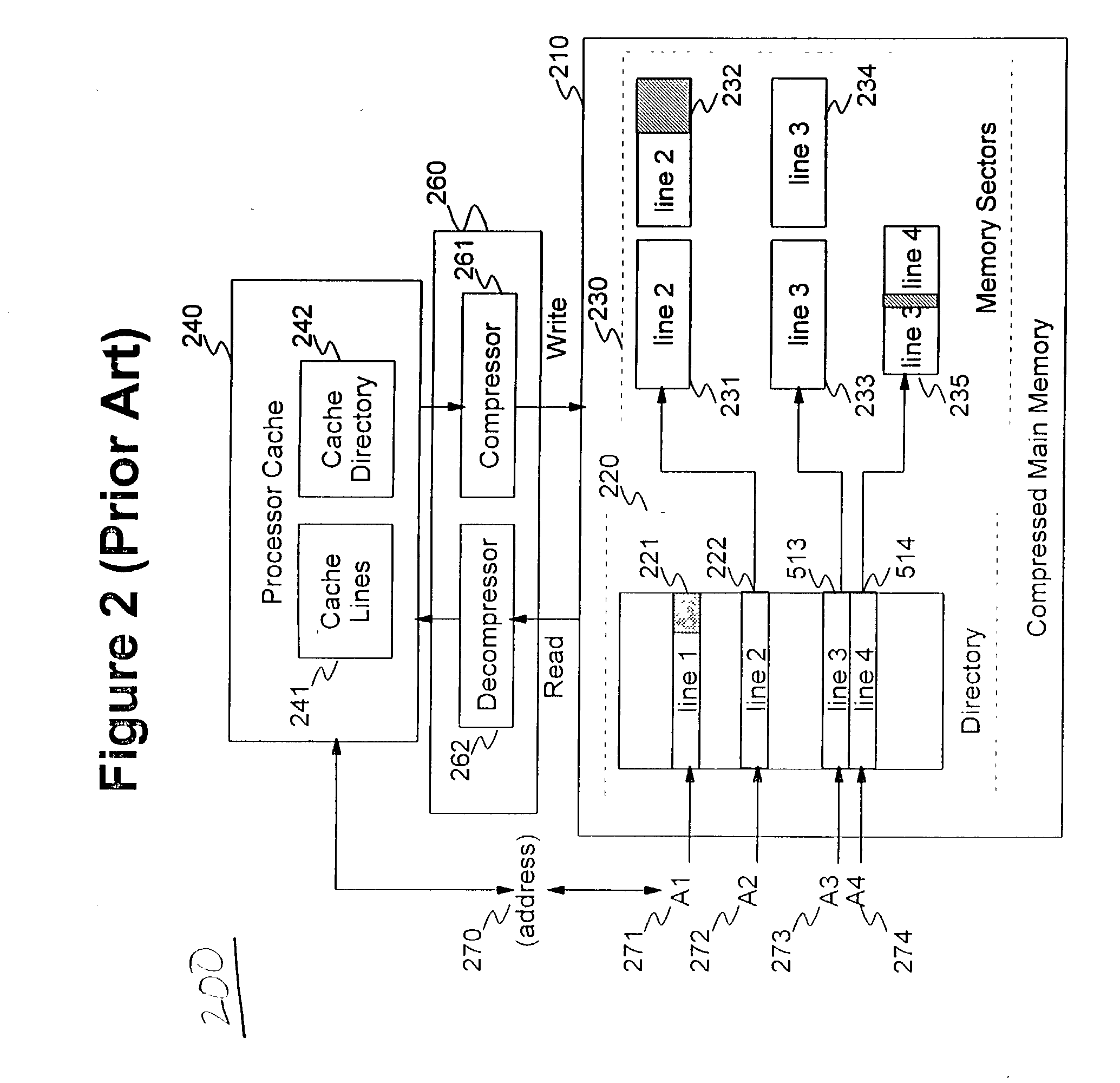Method and system for storing memory compressed data onto memory compressed disks
- Summary
- Abstract
- Description
- Claims
- Application Information
AI Technical Summary
Benefits of technology
Problems solved by technology
Method used
Image
Examples
Embodiment Construction
[0061] Referring now to the drawings, and more particularly to FIGS. 1-7, there are shown preferred embodiments of the method and structures according to the present invention.
[0062] PREFERRED EMBODIMENT
[0063] In a preferred embodiment, it is assumed that cache lines and memory lines have the same size (e.g., 1024 bytes), that memory granules are 64 bytes long, and that memory sectors are 256 bytes long and are aligned on 256-byte boundaries.
[0064] Obviously, as would be evident to one of ordinary skill in the art taking the present application as a whole, the invention is not limited to this particular choice of methods.
[0065] The invention has several main components, including how to transmit memory-compressed data from the processor to the IOP, and between the IOP and the disk, and how to store memory-compressed data on disk. These components will be discussed in turn below.
[0066] Transmitting Memory-Compressed Data to and from the I / O Processor / I / O Adapter (IOP / IOA)
[0067] The ...
PUM
 Login to View More
Login to View More Abstract
Description
Claims
Application Information
 Login to View More
Login to View More - R&D
- Intellectual Property
- Life Sciences
- Materials
- Tech Scout
- Unparalleled Data Quality
- Higher Quality Content
- 60% Fewer Hallucinations
Browse by: Latest US Patents, China's latest patents, Technical Efficacy Thesaurus, Application Domain, Technology Topic, Popular Technical Reports.
© 2025 PatSnap. All rights reserved.Legal|Privacy policy|Modern Slavery Act Transparency Statement|Sitemap|About US| Contact US: help@patsnap.com



